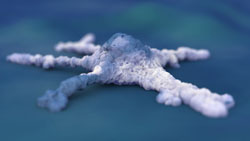Tackling neurological illnesses
Paraneoplastic neurological syndromes (PNS) which affect the nervous system in cancer patients can be severely debilitating and reduce the quality of life considerably. The EU-funded project 'Paraneoplastic neurological syndromes (PNS) strengthening the European network' (PNS-EURONET2) aimed to upgrade the knowledge base on the disease to improve treatment options. The said network scrutinised data entry and data quality that went into the main database on PNS. It identified links among PNS, tumour types and specific antineuronal antibodies, in addition to documenting previously unrecognised PNS and investigating clinical issues through prospective studies. By consolidating patient sample banks for serum, cerebrospinal fluid and lymphocytes, the project team could facilitate antibody testing and identify novel antineuronal autoantibodies for diagnosis. The new database listed all PNS types and other syndromes related to cancer and helped produce valuable observations. For example, it enabled the project team to determine that in 65 % of cases, PNS preceded tumour detection. Another valuable finding was that patients with cerebellar degeneration and Yo antibodies had more disability than cases with other onconeural antibodies. In addition, the project revealed that steroids were the most common immunomodulatory drugs followed by high-dose immunoglobulins, plasma exchange and immunosuppression. Moreover the database highlighted the prevalence of each syndrome, confirming that cerebellar degeneration and sensory neuronopathy were the most frequently appearing PNS. These findings and many more have emerged from consolidating the research inventory and exploiting the database for scientific research. The results have already helped with diagnosis and have set the wheels in motion for better treatment options.







